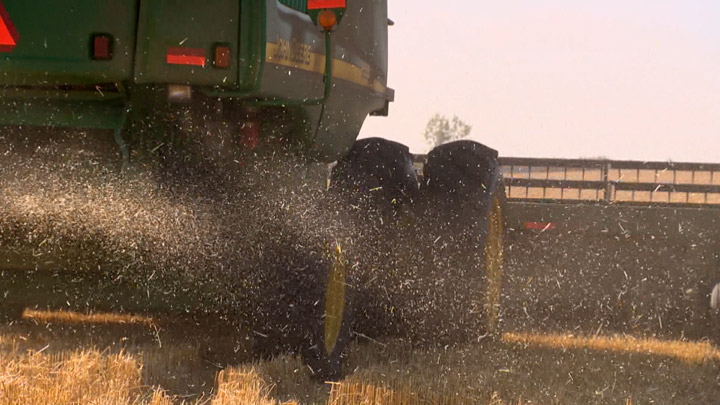Warm temperatures and a dry week has helped Saskatchewan farmers get ahead of the five-year harvest average, but it has caused topsoil conditions to worsen across the province.

Saskatchewan Agriculture reported Thursday in its weekly crop report that 14 per cent of the 2017 crop is in the bin.
READ MORE: Saskatchewan harvest slightly ahead of average
The five-year average for this time of year is eight per cent.
Another 15 per cent of the crop is swathed or ready to straight-cut.
The harvest is most advanced in the southwest, where 30 per cent of the crop is combined, with producers in the southeast region reporting 23 per cent combined, the west-central at 11 per cent, the east-central at four per cent, and northern regions at one per cent.
Agriculture officials said the majority of producers are expected to be in the field by the end of the month if the weather holds.

Get breaking National news
READ MORE: Straight cutting viable method for harvesting canola: PAMI study
Of concern, though, is the northwest, where many areas are reported to be saturated and access to the fields will be an issue.
While the weather has helped with the harvest in most of the province, it has caused topsoil conditions to worsen.
Topsoil moisture on cropland across the province is rated at 40 per cent short and 27 per cent very short, with one per cent reported surplus and 32 per cent adequate.
Hay land and pasture topsoil moisture is rated as 35 per cent short and 38 per cent very short, with one per cent rated surplus and 26 per cent adequate.
The majority of crop damage in the past week was caused by hail, strong winds, localized flooding and the lack of moisture.
READ MORE: Drought in Saskatchewan reached extreme levels in July
Another concern is equipment coming into contact with power lines.
SaskPower said they have received 12 reports so far in August, four in the past week, of machinery coming into contact with power lines.
There have been no reports of serious injuries.
Officials said anyone who has come into contact with a power line should immediately seek medical attention, even if there are no signs of injuries.






Comments